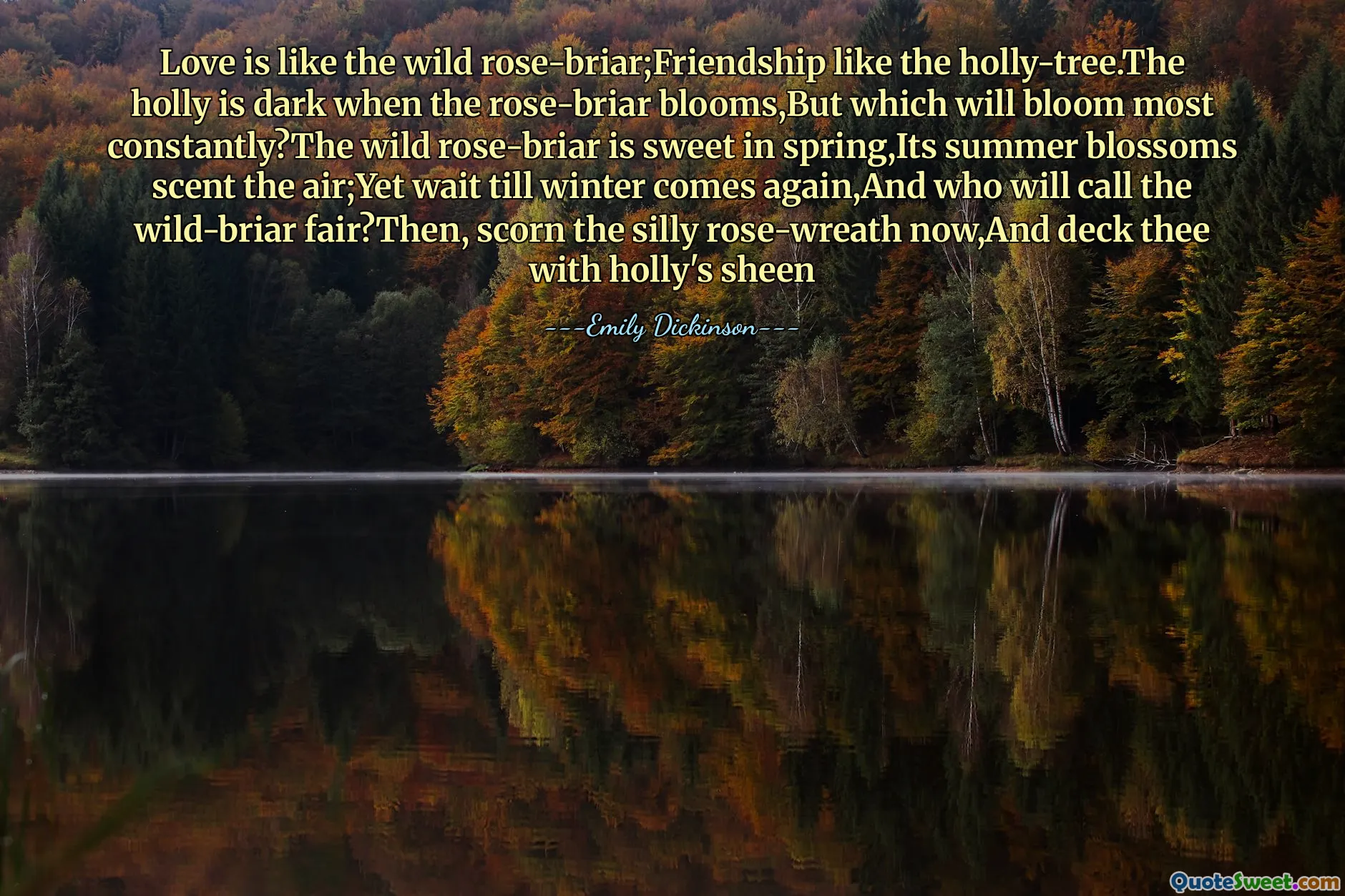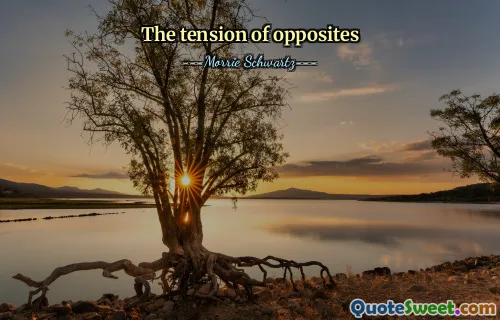
Love is like the wild rose-briar;Friendship like the holly-tree.The holly is dark when the rose-briar blooms,But which will bloom most constantly?The wild rose-briar is sweet in spring,Its summer blossoms scent the air;Yet wait till winter comes again,And who will call the wild-briar fair?Then, scorn the silly rose-wreath now,And deck thee with holly's sheen
Emily Dickinson uses the metaphor of plants to explore the nature of love and friendship. She contrasts the wild rose-briar, which represents love, with the holly-tree, symbolizing friendship. The rose-briar is beautiful and fragrant in spring and summer, suggesting the fleeting nature of passionate love. However, in the winter, its appeal fades, highlighting how love can be transient and uncertain.
In contrast, the holly-tree remains evergreen and resilient, representing the enduring and stable essence of friendship. Despite its less flamboyant beauty, friendship provides lasting support and comfort throughout difficult times. Dickinson's reflection encourages a deeper appreciation for the steadfastness of friendship over the impermanence of romantic love.





